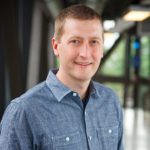
Ideo’s farm team: why med device R&D leaders need one too
- Posted by Chris Justice
- On July 29, 2019
- human, Industrial design
Twenty-some years ago, Ideo quietly brought me into the inner world of their design practice, through a little-known, and never-publicized back door.
Ideo is a well-known Palo Alto-based industrial design firm that created Apple’s first mouse, among many other consumer products. Industrial designers craft product appearance and user experience – typically working with engineers who mind the million design details of bringing a product vision into reality.
Rewinding twenty years ago, I had just graduated from an electrical engineering school. I was working for a design engineering firm in Des Moines while my wife, Holly, finished design school. For those unfamiliar with the Midwest, this might be the last place that comes to mind for advanced, next-generation design from a technology hub.

Ideo had industrial designers, user insight, and phenomenal knowledge of their customers. But the surprising truth was that the Silicon Valley design firm didn’t have something they desperately needed: Engineers. They needed (but didn’t have) lots of engineers to take Industrial Design concepts and make them a reality! They didn’t have enough electrical engineers, nor embedded software developers either, and not enough mechanical engineers. And Ideo’s customers were eager to field new systems as fast as possible, always in a competitive rush to release new products into the market.
I imagine it was frustrating to Ideo, who was in the heart of Silicon Valley and surrounded by legions of engineers, they just couldn’t find enough of them in the highly competitive Bay Area market for tech talent. Additionally, they struggled to keep the great engineers they did hire. Ambitious engineers would come and get Ideo credibility on their resume and then quickly get recruited away.
Regardless of the job market, Ideo still had lots of work to do; so, they did the unexpected (and somewhat on accident).
A great engineer, who worked at the Des Moines firm, moved to the Bay Area to work at Ideo. After getting into a pinch, he called trusted friends in the Midwest to bring in the muscle needed to do the engineering work under a tight deadline for an important client. From my perspective, he cultivated a secret farm team, one that he called on to get important work done quickly.
Fast forward twenty years and Engenious is that secret farm team for many of our clients. Over two decades, I have had the privilege of working with 10 of the top 20 medical device manufacturers. However, you won’t see any of these companies on my LinkedIn profile, because it was all done as part of relatively anonymous “farm teams”. Smart (and maybe sometimes a little desperate) VP’s of R&D have looked to us for help: getting that hardworking midwestern engineering muscle to quietly and earnestly do the detailed work of planning, specifying, architecting, designing, testing and launching devices on their behalf.
Fast forward twenty years, and Engenious is that secret farm team for many of our clients. Over two decades, I have had the privilege of working with 10 of the top 20 medical device manufacturers.
Over the last decade, I count myself fortunate to have spent a lot of time on both coasts working with many of the biggest names in the medical device industry, because they get in the same pinch as Ideo. And because medical device manufacturers may not release new products every year, it doesn’t make sense to field a large team for something (product design) that only happens every few years.
Maybe you are like Ideo: great at knowing your customers, insightful about your market, surrounded by lots of engineering talent, but unable to field the right team when you need it. At some point, you should consider putting your own farm team in place. Let’s talk!
ABOUT THE AUTHOR(S)
Chris has accumulated many lessons-learned from 22 years of medical device design. Chris is principal and co-founder of Engenious Design, a medical device design firm that works with complex electro-mechanical & embedded software systems that are developed from scratch, acquired, and multi-generation products.




